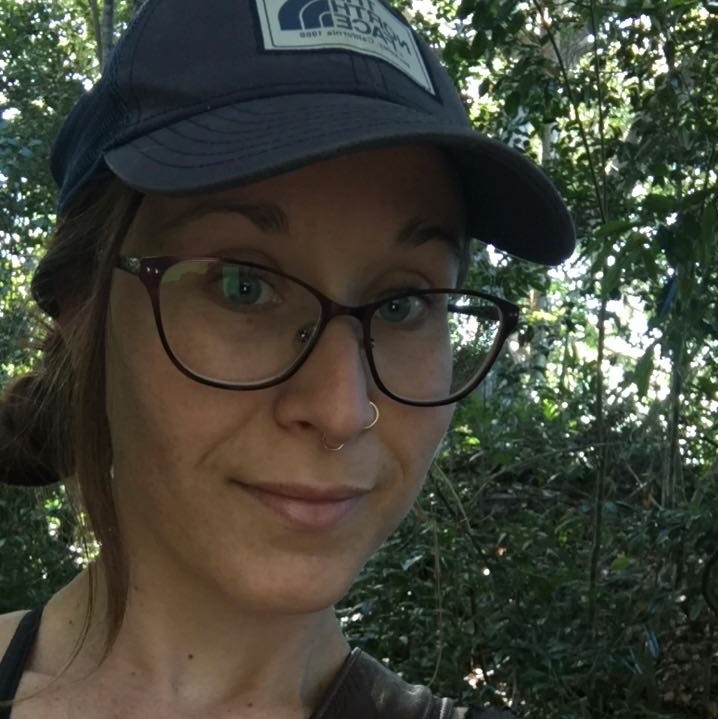Breaking Down Barriers and Reducing Conflict Over Wolves in Colorado
It was a cold February morning in Glenwood Springs, Colorado when the first flakes of an untimely blizzard fell to the steps of the historic Old Colorado Hotel. The initial calmness of the storm contrasted the palpable excitement amongst our small team for what was to come. That evening, representatives of Tribal Nations, Colorado state agencies, zoos, ranching and hunting interests, and environmental organizations were scheduled to arrive for a two-day workshop to discuss perspectives on proposed wolf reintroduction into Colorado. Hailing from all corners of the state, gathering such a group was a feat in itself. Yet, in the spirit of Colorado stick-to-itiveness, 31 participants from diverse backgrounds arrived in the midst of the snowstorm to ensure their voices and perspectives were shared.
Reintroducing wolves is a contentious issue throughout the American West. This debate has come to a head in Colorado where, through the efforts of environmental organizations and citizen groups, wolf reintroduction is on the ballot for November 2020. Ballot initiative 114, if passed, would charge the state with reintroducing wolves to western Colorado by 2023.
Months prior to the workshop, our cohort first met in a small office in Colorado State University’s (CSU) Forestry building in August 2019 to start our graduate programs. We quickly found a mutual interest in understanding the drivers of conflict surrounding wolf reintroduction and management, and were both nervous and excited to begin. Matt came to CSU by way of Bozeman, Montana, where he worked to help livestock producers adjust to the growing presence of grizzly bears and wolves on the landscape. Mireille spent years focusing on human-primate interactions in South America and Africa, and prior to that worked on a small Scottish Highland cattle ranch in California and with carnivores at a North American wildlife rescue.
Our first assignment was to gather a pulse on the “wolf issue,” as many frame it, in order to inform the February workshop. We embarked on a road trip of sorts throughout Colorado to interview those individuals invited to the workshop, who each represent some of the key voices in the debate over wolf reintroduction. We spoke with representatives of stakeholder groups (i.e. those with a stake in wolf management), government agents, and representatives of the Ute Mountain Ute and Southern Ute Tribes. Native American tribes are sovereign nations that have their own wildlife management concerns and natural resource interests, yet they have been historically marginalized from these conversations. Understanding and incorporating their perspectives and needs is vital to the development of a management plan.
Even though our interviewees fell on all sides of the debate, each individual discussed their position with deep thought and appreciation for others’ perspectives. A key thing we learned from these interviews is that people want opportunities for their voices to be heard in the management of wolves and other natural resource management (NRM) issues.
Following these interviews, we helped our advisor, Dr. Rebecca Niemiec, and researchers at the Center for Human-Carnivore Coexistence (CHCC) to prepare for the Glenwood Springs workshop that commenced on February 4th and 5th, 2020. This workshop was designed as a platform for individuals to share their perspectives towards wolves, to find ways to reduce future conflict, and to hopefully develop mutual trust, respect, and empathy between represented groups. After the storm subsided the following morning, our months of interviews, thousands of miles driven, and countless hours of logistical planning were about to come to fruition.
The workshop was facilitated by the Center for Conservation Peacebuilding (CPeace), an organization dedicated to creating long-lasting solutions for people and wildlife. Francine Madden, CPeace’s executive director and primary facilitator, is an expert when it comes to creating peace between those who are in conflict over wildlife. After working with stakeholders in conflict over wolves in Washington State, her success was described in The Washington Post as “magic.”
Watching Madden in action was inspiring. Her passion for a quality conflict transformation process and commitment to the workshop participants was obvious. Prior to the workshop, she spent months building relationships with the attendees and made every effort to understand each person’s values, hopes, and concerns. Her expert facilitation put people at ease and encouraged them to dig deep and think about how their values and identities shape their own perspectives toward wolves, how decisions about wolf management may impact other Coloradans, and how they would like to be included in decisions moving forward.
One important function of the workshop was that it helped break down harmful assumptions that attendees had about others. This is important, because assumptions about others' intentions and position is a known driver of conflict. Yet, the social science literature tells us that processes encouraging group contact and constructive dialogue can help break down these assumptions and pave the way for empathy and collaboration.
During our interviews, we identified several assumptions that participants on all sides of the debate had about one another. Some folks thought that individuals with opposing views are unrealistic or misinformed about the real facts or potential impacts surrounding this issue. Some believed others did not care to, or refused to, even consider other’s perspectives on wolf reintroduction. Through Madden’s perspective-taking and empathy-building exercises, the frustration many felt with individuals from other groups was lessened allowing for more constructive dialogue and planning.
Additionally, Madden encouraged participants to think beyond their personal positions on wolves through thoughtfully planned activities. In one small group activity, participants considered what underlying identity-based conflicts might be contributing to the conflict over wolves. Ranchers shared that they felt other groups didn’t empathize with the threat of wolves to their livelihood, leading to feelings of betrayal from the public. Some hunters and ranchers expressed that they felt the ballot initiative to reintroduce wolves represented a recent cultural shift where their contribution to society was no longer recognized or appreciated. Representatives from environmentalist groups voiced that they felt excluded from past wildlife management decisions, and viewed the ballot initiative to reintroduce wolves as an opportunity for their voices to be heard and incorporated in future wildlife management plans.
During our graduate studies, we’ve learned that understanding identities and values (i.e. an individual's core principles), is an important step of NRM conflict resolution. The way people engage with and care about nature and wildlife ties back to their values, making their experience with nature very personal. People often shape their identities in relation to how they engage with nature. For example, many of our participants identified as a rancher, a hunter, an environmentalist, or a wildlife advocate, all of which include personal connections with nature. As a result, individuals may feel attacked or threatened when others oppose their viewpoints on a natural resource issue.
The social science literature shows this is no different when it comes to wolves. Wolves are, in a way, symbolic of an individual’s core beliefs and values. For some, wolf reintroduction may represent a loss of tradition or a threat to their livelihood, while for others reintroduction may be symbolic for righting past wrongs to wolves and the environment. This is why the “wolf issue” can cause conflict, because it is not just about the wolves, but about how people perceive wolves will impact their lives, their family, their community, and the environment.
Conflict-reducing stakeholder engagement processes, such as the workshop we convened, are important parts of developing management plans for contentious natural resources issues. Processes that identify and address these underlying value and identity based conflicts are particularly effective. These processes provide opportunities for groups to explore differences, air past grievances or perceived slights, build recognition and empathy for others’ needs and values, and break down assumptions about members in a different stakeholder group. This may then allow for reduced prejudice between groups, increased and proportionate access to resources, enhanced future collaborations, and fewer future conflicts.
Importantly, the social science literature highlights that inclusion of diverse groups into NRM decision-making is an effective approach to reducing conflict. When people feel their voices have been heard, respected, and included in decision-making, they are more likely to accept and cooperate with management decisions, even those that may not align with all of their goals. Because of these benefits, in 2005, the Office of Management and Budget and the President’s Council on Environmental Quality directed executive branch agencies to use environmental collaboration and conflict resolution (ECCR) processes to manage contentious NRM issues. The Environmental Protection Agency also notes they use these processes because public deliberation produces more practical and comprehensive decisions; results in reduced costs, saved resources, and shorter processes; and, because citizen involvement in decision-making is a democratic ideal.
When put into action, conflict reducing and collaborative practices can create tractable outcomes for people and predators. In Washington state, Madden and the Department of Fish and Wildlife lead an intensive stakeholder-driven process involving a 17-member citizen group over 23 meetings and 5 years to form a state wolf management plan. Now dubbed the Wolf Advisory Group (WAG), the group continues to meet as a structure for mitigating conflict between parties, while increasing buy-in to mutually agreed upon plans for reducing wolf-livestock conflict and reactionary wolf killing (lethal control). While every process has challenges and conflict is something that can only be managed and not erased, WAG offers a model on how diverse people can come together to work through differences towards mutually beneficial NRM decisions.
On the other side of the coin, when stakeholder perspectives are excluded during decision-making, conflict may escalate and backlash between stakeholder groups, or between the public and agencies, may begin. This conflict may look like divisive stakeholder lobbying, lawsuits, petitions and protests, and citizen sponsored ballot initiatives. Research also shows that when conflict over wildlife management decisions are not addressed, long-lasting conservation success may be compromised and trust in management agencies can erode, threatening long-term collaborations and working relationships essential to conservation.
The workshop ended with a group dinner, complete with an amazing peanut-butter chocolate cake for dessert, and shared optimism that there is a pathway forward to reduce conflict over wolves in Colorado. The civility, open dialogue, and empathy practiced by participants on all sides of the issue was especially encouraging. By bringing diverse groups under the same roof, the workshop set the initial building blocks for trust, respect, and empathy for other groups, which is crucial for any future collaborations. This is needed because many participants also shared their hope that a similar inclusive and collaborative process will happen during the development of a wolf management plan. The outcome of the vote, and decisions in a management plan should wolves be reintroduced, may affect people’s livelihoods, how they envision Colorado for future generations, and our environment. This is why it is so important that our community members’ voices can be heard and included in this decision.


PhD Student in the Human Dimensions of Natural Resources at Colorado State University

Masters Student in the Human Dimensions of Natural Resources at Colorado State University

Masters Student in Conservation Leadership at Colorado State University
Disclosure statement:
The Institute for Science & Policy is committed to publishing diverse perspectives in order to advance civil discourse and productive dialogue. Views expressed by contributors do not necessarily reflect those of the Institute, the Denver Museum of Nature & Science, or its affiliates.
